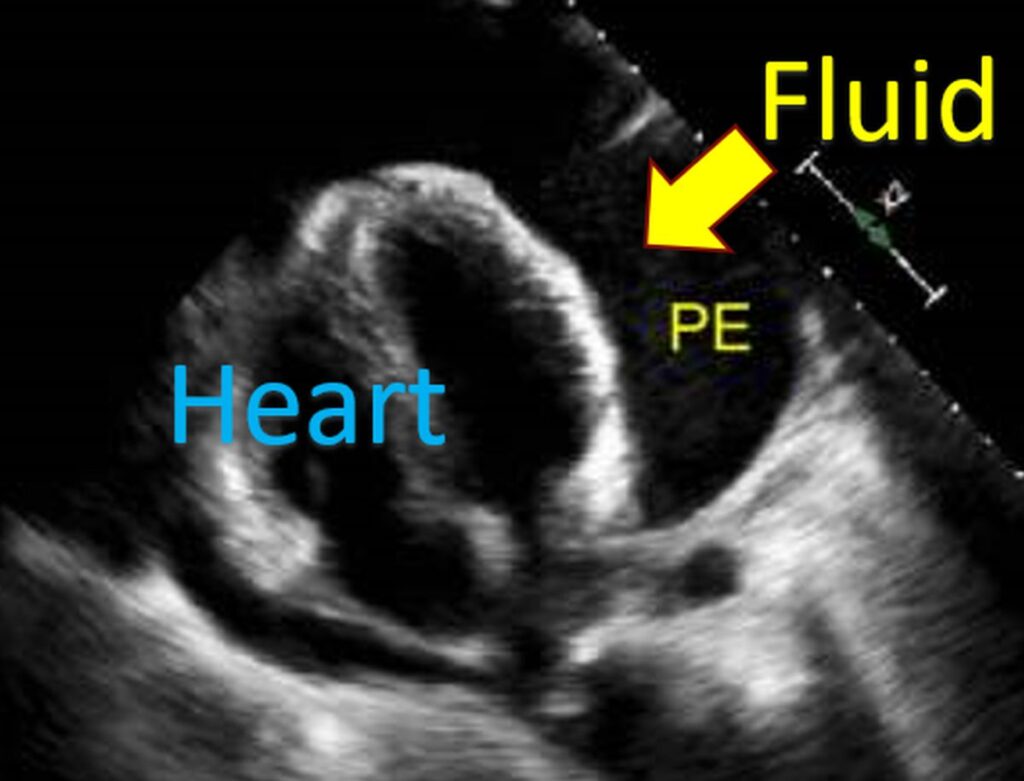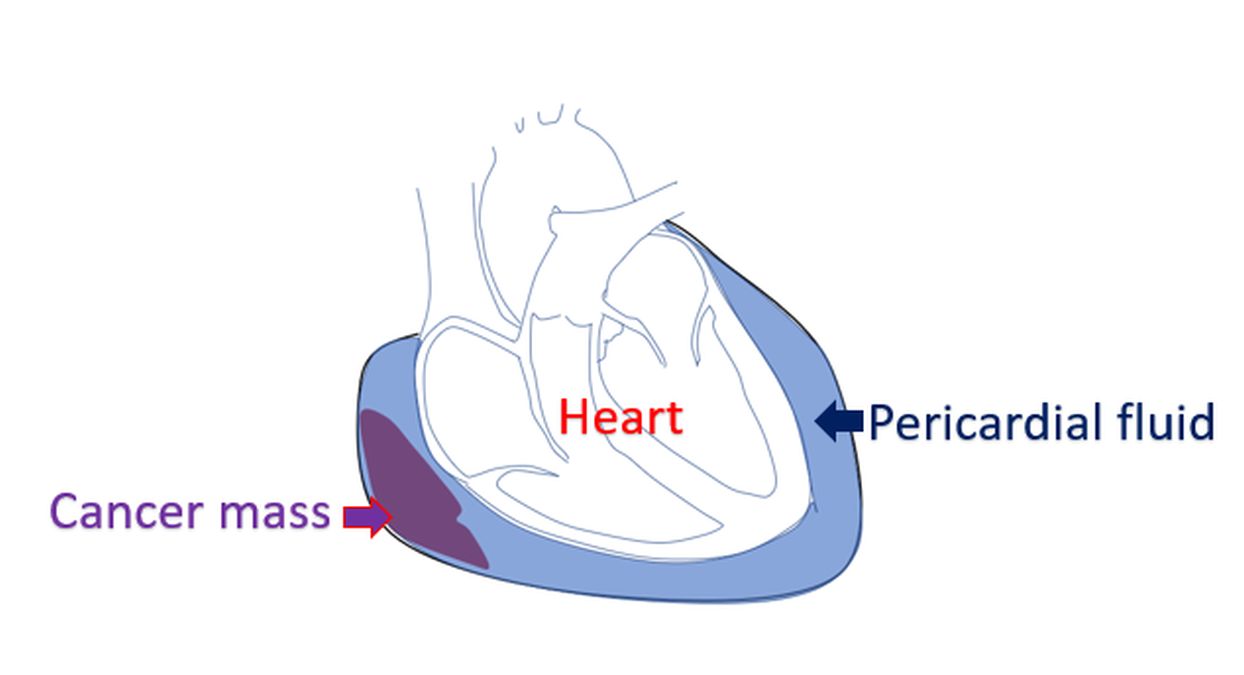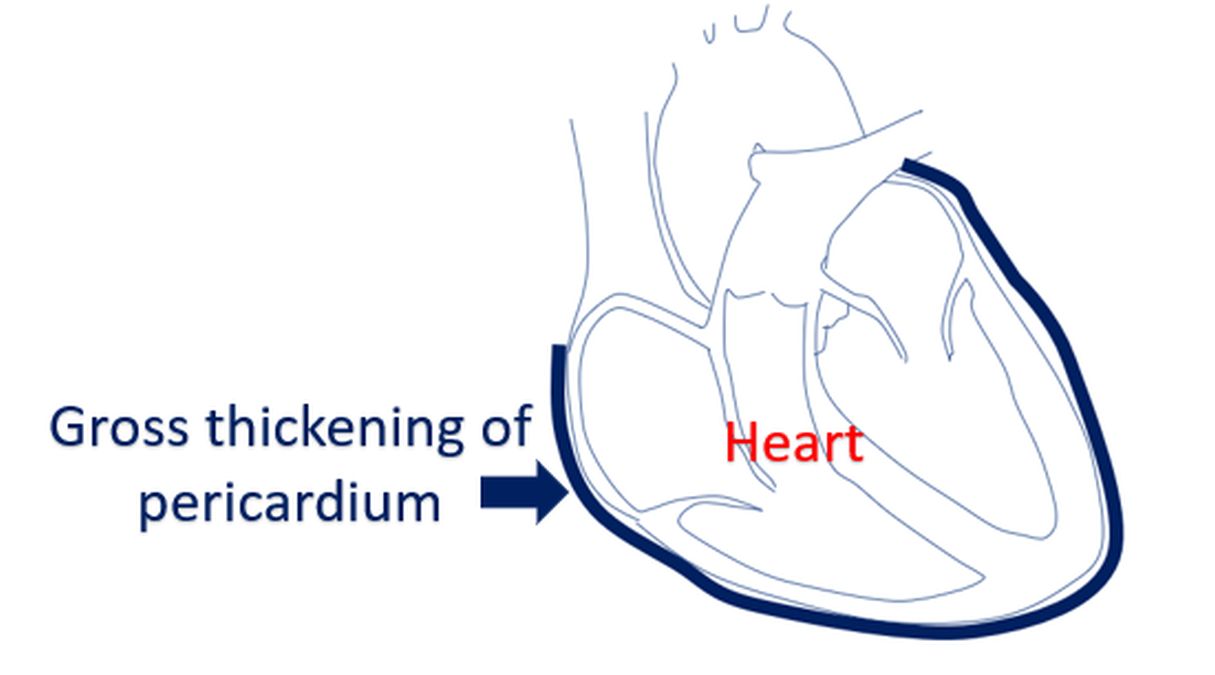What is pericardial effusion?
What is pericardial effusion?
Pericardial effusion is collection of fluid within the layers covering the heart. Pericardium is the covering of the heart. It has an inner layer and an outer layer. Fluid collects in between these layers in certain disease conditions and compresses the heart. If the amount of fluid is large or there is a rapid increase in the rate of fluid collection, the compression of the heart prevents its proper filling. An unfilled heart is not able to pump out blood well and the blood pressure falls. This serious condition is known as cardiac tamponade.

Cardiac tamponade needs urgent removal of fluid from the pericardial cavity by needle aspiration or surgical drainage if the fluid is very thick. Very thick fluid can be there if the collection is due to some types of bacterial infection. Sometimes the collection of fluid can be due to bleeding into the pericardial cavity. This occurs most commonly in cancer (malignant pericardial effusion). Usually it is cancer of other organs spreading to the pericardium (secondary) rather than primary cancer of the pericardium which is very rare (mesothelioma).

An important type of bacterial infection which causes pericardial effusion is tuberculosis. It may or may not be associated with tuberculosis elsewhere in the body. Tuberculous pericardial effusion can be documented by aspirating the fluid and culturing the fluid for the presence of the bacteria causing tuberculosis (Mycobacterium tuberculosis). There are other tests also for tuberculous pericarditis, but they not as sure as growing the bacterium in culture. After draining the pericardial fluid to relieve the compression of the heart, tuberculous pericardial effusion needs full course of medication for eradication of infection.
If the cause is a cancer, in addition to draining the pericardial fluid and relieving the compression on the heart, treatment for cancer will have to be given. This may include medications, radiation and surgery, depending on the type of cancer. Cancer could be in nearby organs like the lung or breast or from distant organs. Analysis of the aspirated fluid may give information on the type of cancer. Usually other investigations to search for the location and spread like a positron emission tomography (PET scan) may be considered.
Inflammation of pericardium as inflammation elsewhere can be painful and cause chest pain. But pericardial effusion can build up slowly without much pain. When the quantity is large enough to compress the heart, the person may feel breathless or dizzy because of a fall in blood pressure. Sometimes mild pericardial effusion may be detected by an echocardiogram done for other causes.

Pericardial effusion is usually confirmed by an echocardiogram (ultrasound study of the heart). In case of cardiac tamponade, the heart can be seen swinging within the large amount of fluid in the pericardial cavity. In addition, when the ventricles relax after a contraction, the right sided chambers can be seen to be collapsing, preventing proper filling of the heart. Ventricles are the lower muscular chambers of the heart. Upper chambers are right and left atrium. Right atrium and right ventricle are the chambers which collapse in diastole (relaxation) in cardiac tamponade.
ECG (electrical recording of the heart) shows low voltage complexes in pericardial effusion. This is because the fluid surrounding the heart prevents good conduction of electrical signals of the heart to the body surface. When the heart swings in the pericardial cavity due to large amount of fluid in cardiac tamponade, alternate complexes in the ECG can be seen as taller and shorter. This is known as electrical alternans.
In addition to cancer and tuberculosis, any other cause of pericarditis can also cause pericardial effusion. Pericarditis is the inflammation of the outer covering of the heart. Viral infection is an important cause of pericarditis and pericardial effusion. Bacterial infections in the adjacent organs like lungs can also rarely spread to the pericardium, causing pericarditis.
Pericarditis can occur after a heart attack due to damage following a loss of blood supply. Diseases of the immune system can also cause pericarditis and pericardial effusion. Radiation treatment given for cancer of adjacent organs like lungs and breast can also cause pericarditis. Rheumatic fever is another important cause of pericarditis. But a large pericardial effusion is uncommon in rheumatic fever, where the involvement is mainly of the heart valves. Infections of the heart valves can also spread to the pericardium and cause pericardial effusion.
Another important cause of pericardial effusion is hypothyroidism. Hypothyroidism is reduced function of the thyroid gland in the neck. In hypothyroidism, fluid can also collect in other parts of the body, more commonly under the skin of the legs. Hypothyroidism is very common in the community, but pericardial effusion due to hypothyroidism is very rare. This is because of prompt detection of hypothyroidism due to readily available blood tests and treatment. Hence they seldom become severe enough to develop pericardial effusion. Treatment of hypothyroidism is also not very expensive and needs only replacement of the deficient thyroid hormone.
Importance of pericardial effusion is the need for prompt treatment in those who develop cardiac tamponade, which is a potentially life threatening condition. Mild pericarditis with minimal pericardial effusion need only medical treatment and follow up. In case of diseases like tuberculosis or other bacterial infection, long term follow up is needed. This is because some of them may develop thickening and scarring of the pericardium known as constrictive pericarditis. In that condition a thickened pericardium can prevent proper filling of the heart and needs surgical removal of thickened pericardium.



